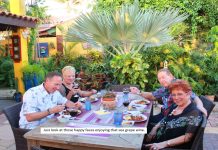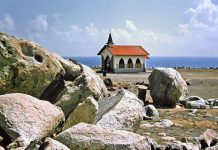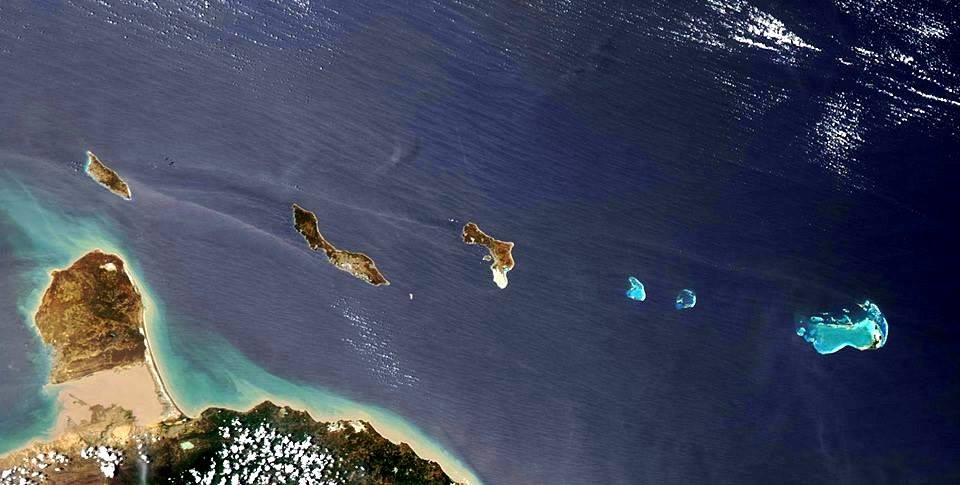Flying mammals
Our fragile local biosphere is about the tiny regions of the surface of our planet that sustains life of species not found elsewhere.
Life can only handle as much stress which economic progress demands of it. Revenue seekers in most of the time do not consider a green approach. Consequences are in our face, results of a free for all attitude ignoring irreparable damage to the island as whole as our sustainable economic asset as top tourist destination. Lessons learned here and elsewhere must be put in action. Isn’t it exactly our nature, plants and animals that really take care of our ecosystem and life on this rock? Isn`t this the only industry we depend upon? Irony is that since 1987 a rough estimate of 72% of what was left of a forest covered Oranjestad in the 17th century (beginning for Cumaná area, close to the Airport, stretching North East to Ponton hill , than South to the bay). Imagine big old 300 year Kwihi trees ( Prosopis Juliflora) whit thickness of 4 to 5 feet in diameter.

Pic1. A young Kwihi decorating our side roads .
Etnia Nativa’s point of view is decimation of natural habitat is desertification. Thankful that we are out of the so called hurricane belt however to bulldoze one football pitch size of land after another for Aruba is worse than all-natural disasters, just to build houses for sale. The effect on such a small island will soon reach its tipping point. A sign of overpopulation, nature destruction and stress will also raise the cost of healthcare, doing business, safety and security in general.


Pics. 2 & 3 One of many victims of this destructive approach is our bat population.
Bats navigate by echolocation and they are nocturnal. These flying mammals bring many benefits to our ecosystems. More than eight species live in our national park and elsewhere and different species provide different benefits. Some pollinate plants, others eat insects, many serve as prey to other animals, and they all inspire scientific discoveries. Some species live in batholite formations and in many islands caves, abandoned houses, mines and in cavities that form within mature Breba cactuses. Caves are complex and unique ecosystems that provide homes for a diversity of creatures from insects to amphibians and fish as well as mammals like wood rats and bats. Many of these creatures can only survive within the cave, and they rely on nutrients carried into the cave by water or other animals. Bats benefit caves by providing important nutrients in their guano (better fertilizer than cow manure!) that support the growth of communities of cave organisms.

Pic.4. Our nocturnal visitors a pollinators, nectar and fruit eater Glossophago longirostris
Bats eat insects, ” are so-called ‘insectivorous’. They feast on insects each night, adding up to more than 3 million AWG worth of pest control each year on the island. When bats are around to eat insects, there are fewer insect pests causing damage to crops and gardens. If agriculture is to become the next call, farmers don’t have to invest as much in pesticides. Imagine a teenage boy eating 200 quarter-pound burgers — that’s how much a bat eats in insects on an average night!
Several species of bats of Aruba eat nectar. Many types of our endemic plants of our ecosystem rely on bats for pollination and seed dispersal, such as quedebexii, huliba the agave species, candelabra cacti’s etc., All around the island and in our national park, long-nose and long-tongue bats are perfectly adapted to pollinate these plants, and they provide extensive value to the agricultural industry. So next time you see our agave in bloom, happy mocking birds, a zooming humming bird and delicious cactus dates, say thank you to the bats. q

Pic.5. an agave variety in bloom
Just as some bats rely on thousands of insects each night for survival, other animals in the ecosystem rely on bats for their calories. Hawks, falcons, and owls eat bats, and mammals like cats, and rats and intrusive reptiles like boas sometimes attack bats while they roost. Technological advances in engineering has incorporated some of bats’ special features like of their wing membranes and echolocation have inspired Drones that have thin and flexible bat-like wings are. The wingsuits used by base jumpers take more than a few tips from bats’ aerodynamic feacher.
Discover an Aruba which no other could share with you. Discover and explore and take your experience home with you. Our renowned indigenous and educative session has been entertaining curious participants for decades. Mail us at etnianativa03@gmail.com to confirm your participation. Our facilities and activities takes place close to your hotels area. 











